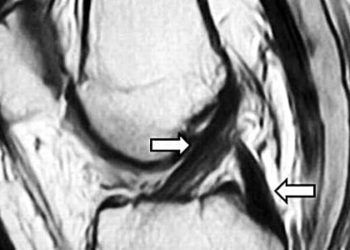Volume-outcome relationship exists in treatment of intracranial hemorrhage

 [tabs tab1=”2MM Rundown” tab2= “Full 2MM Report” tab3=”About the Authors”]
[tabs tab1=”2MM Rundown” tab2= “Full 2MM Report” tab3=”About the Authors”]
[tab]
Image: PD/Intracerebral Hemorrhage
1. Institutions with a greater volume of intracranial hemorrhage cases (>6/year) have superior in-hospital mortality outcomes.
2. There is no volume-cost relationship for intracranial hemorrhage.
Volume-outcome relationships are key drivers of policy with regards to consolidating care for the most complex pathologies at regional institutions with higher case volumes. This study utilized the largest nationally representative all-payer data set to identify a VOR for intracranial hemorrhage that plateaued after 6 cases/year where the in-hospital mortality rate drops from nearly 15% to 8-10%. There was no significant cost-volume relationship identified. The limitations of this study include limited sample size since it only includes 1 year of NIS data, the lack of physiological data in the NIS dataset to control for such clinical parameters between institutions, and the fact that this was a study of institutional volume, not individual surgeon volume which many argue to be more important in determining outcomes.
Click to read the study in Journal of Neurosurgery
[/tab]
[tab]
Image: PD/Intracerebral Hemorrhage
1. Institutions with a greater volume of intracranial hemorrhage cases (>6/year) have superior in-hospital mortality outcomes.
2. There is no volume-cost relationship for intracranial hemorrhage.
Primer: The volume-outcome relationship (VOR) in medicine is not only intuitive, but has also been well documented in the literature for numerous procedures, and has led to significant policy changes leading to the consolidation of such practices at high volume centers. A separate, but related issue of the volume-cost relationship has been less clearly established with some studies pointing towards increasing complexity leading to higher costs at high volume centers, while others suggest high volume centers can streamline process measures and improve outcomes leading to ultimate cost reductions. Despite the demonstration of VORs in many areas of medicine, there exists a knowledge gap as to whether there is a VOR for neurotrauma care. The authors of the study were interested in examining this question by focusing on intracranial hemorrhage (ICH) with the hypothesis that low volume centers have inferior outcomes, and high volume centers encounter higher costs.
Background reading:
- Bardach NS, Zhao S, Gress DR, Lawton MT, Johnston SC: Association between subarachnoid hemorrhage outcomes and number of cases treated at California hospitals. Stroke 33:1851–1856, 2002.
- Birkmeyer JD, Dimick JB: Potential benefits of the new Leapfrog standards: effect of process and outcomes measures. Surgery 135:569–575, 2004.
This [cross sectional cohort ] study: utilized the 2006 Nationwide Inpatient Sample (NIS) to identify patients with intracranial hemorrhage following trauma with ICD-9 codes. Primary outcome measured was patient survival correlated with institutional neurotrauma patient volume. In-hospital mortality was 14.9% for hospitals with < 6 cases annually vs. less than 10% for hospitals with > 6 cases annually. Rates were similar for centers with 6-11 through 60+ cases/year. Cost of care did not vary significantly with patient volume.
In sum: Volume-outcome relationships are key drivers of policy with regards to consolidating care for the most complex pathologies at regional institutions with higher case volumes. This study utilized the largest nationally representative all-payer data set to identify a VOR for intracranial hemorrhage that plateaued after 6 cases/year where the in-hospital mortality rate drops from nearly 15% to 8-10%. There was no significant cost-volume relationship identified. The limitations of this study include limited sample size since it only includes 1 year of NIS data, the lack of physiological data in the NIS dataset to control for such clinical parameters between institutions, and the fact that this was a study of institutional volume, not individual surgeon volume which many argue to be more important in determining outcomes.
Click to read the study in Journal of Neurosurgery
By [AH] and [MS]
© 2012 2minutemedicine.com. All rights reserved. No works may be reproduced without written consent from 2minutemedicine.com. Disclaimer: We present factual information directly from peer reviewed medical journals. No post should be construed as medical advice and is not intended as such by the authors or by 2minutemedicine.com. PLEASE SEE A HEALTHCARE PROVIDER IN YOUR AREA IF YOU SEEK MEDICAL ADVICE OF ANY SORT.
[/tab]
[tab]
 Allen Ho: Allen is a 4th year M.D. candidate at Harvard Medical School, currently conducting cancer research at MD Anderson as a Howard Hughes Medical Research Fellow in the laboratory of Ronald DePinho. He attended the University of California, San Diego where he graduated with a Economics degree in 2008, and was a Fulbright Fellow in Nicaragua. He is planning on pursuing a career in neurosurgery. Allen is responsible for editing, writing and steering the direction of the surgery category. His hometown is Irvine, California.
Allen Ho: Allen is a 4th year M.D. candidate at Harvard Medical School, currently conducting cancer research at MD Anderson as a Howard Hughes Medical Research Fellow in the laboratory of Ronald DePinho. He attended the University of California, San Diego where he graduated with a Economics degree in 2008, and was a Fulbright Fellow in Nicaragua. He is planning on pursuing a career in neurosurgery. Allen is responsible for editing, writing and steering the direction of the surgery category. His hometown is Irvine, California.
[/tab]
[/tabs]







